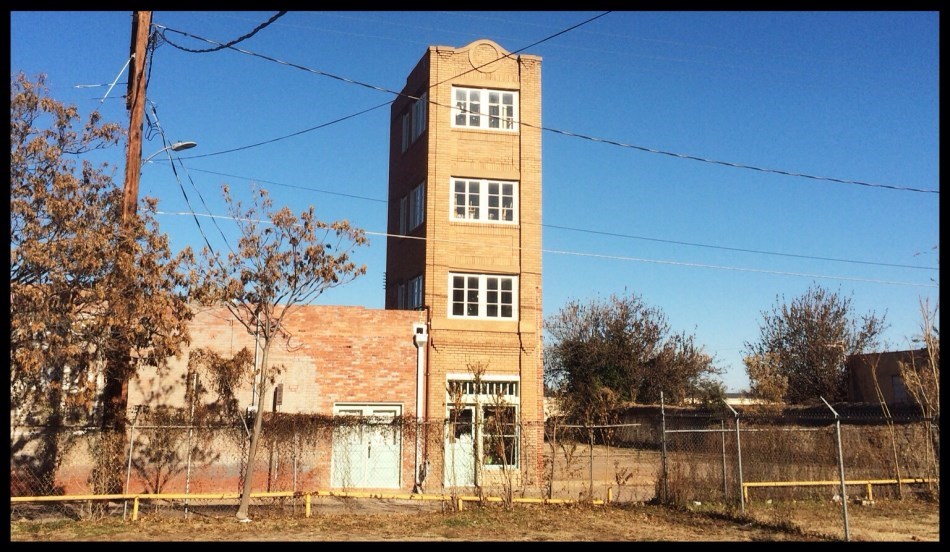It is a late Neoclassical style red brick and cast stone structure. It stands 40 ft (12 m) tall, and its exterior dimensions are 18 ft (5.5 m) deep and 10 ft (3.0 m) wide. Its interior dimensions are approximately 12 ft (3.7 m) by 9 ft (2.7 m), or approximately 108 sq ft (10.0 m2). Steep, narrow, internal stairways leading to the upper floors occupy roughly 25 percent of the interior area.
.jpg)
Reportedly the result of a fraudulent investment scheme by a confidence man, the Newby–McMahon Building was a source of great embarrassment to the city and its residents after its completion in 1919. During the 1920s, the Newby–McMahon Building was featured in Robert Ripley's Ripley's Believe It or Not! syndicated column as "the world's littlest skyscraper," a nickname that has stuck with it ever since. The Newby–McMahon Building is now part of the Depot Square Historic District of Wichita Falls, a Texas Historic Landmark.
.jpg)
A large petroleum reservoir was discovered just west of the city of Burkburnett, a small town in Wichita County, Texas in 1912. Burkburnett and its surrounding communities became boomtowns, experiencing explosive growth of their populations and economies. By 1918, an estimated 20,000 new settlers had taken up residence around the lucrative oil field, and many Wichita County residents became wealthy virtually overnight. As people streamed into the local communities in search of high-paying jobs, the nearby city of Wichita Falls began to grow in importance. Though it initially lacked the necessary infrastructure for this sudden increase in economic and industrial activity, Wichita Falls was a natural choice to serve as the local logistical hub, being the seat of Wichita County. Because office space was lacking, major stock transactions and mineral rights deals were conducted on street corners and in tents that served as makeshift headquarters for the new oil companies.
According to wikipedia




.JPG)




